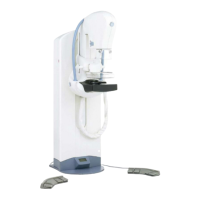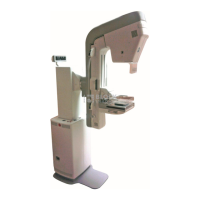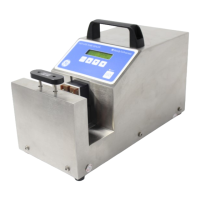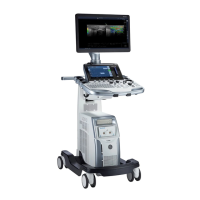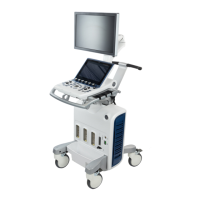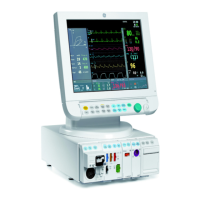PREPARING
AN EXAMINATION
GE Medical Systems
SENOGRAPHE 800T
REV 6 om 2135575–100
2–1
CHAPTER 2 – PREPARING AN EXAMINATION
SECTION 1
PREPARING THE EQUIPMENT
Set the image receptor, field size, collimator diaphragm and compression paddle for the
required view.
For standard exposures, use 18x24 cm or 24x30 cm cassettes and a compression paddle
suitable for the selected format. Use of the Bucky is mandatory for contact views. The cassette
holder must only be used in Magnification.
Note: For best results in AOP and in order to have the correct fit between the bucky and the
compression paddle, it is mandatory to match the format of the compression paddle with
the format of the bucky when in contact mode, i.e. use the 18 x 24 compression paddle with
the 18 x 24 Bucky and use the 24 x 30 paddle with the 24 x 30 Bucky. The 24 x 30 paddle
must not be used with the 18 x 24 Bucky.
Note:
The Senographe 800T is equipped with an exposure interlock feature which prevents an
exposure from being made if there is no cassette in the Bucky/cassette holder, or if the
cassette from the previous exposure has not been changed. However, it is possible for
special purposes such as physicist testing for example to disable this interlock (see
chapter 3 for a detailed explanation).
Trying to make an exposure without a cassette in the Bucky/Cassette–holder or
without having changed the cassette between two exposures will result in a beep
sound and the red light (8) will come on. The exposure will be inhibited.
It is not recommended to remove the exposed cassette from the Bucky/Cassette
holder by pushing it out with another cassette. This would prevent the exposure
interlock feature from functioning correctly.
When inserting a cassette in the Bucky, make sure that it is inserted all the way in and
firmly held between the two stoppers.
Different field sizes and compression paddles can be used.
Note: Use of the Bucky is not recommended in magnification.
RAD PARAMETERS
The Rad parameter selection depends on the filter configuration.
FILTER CONFIGURATIONS
TRACK
FILTER
ÁÁÁÁÁÁÁÁÁÁÁÁÁ
ÁÁÁÁÁÁÁÁÁÁÁÁÁ
KV RANGE
ÁÁÁÁÁ
Mo
ÁÁÁÁÁ
Mo
ÁÁÁÁÁÁÁÁÁÁÁ
22 through 35
Mo
Rh
ÁÁÁÁÁÁÁÁÁÁÁÁÁ
ÁÁÁÁÁÁÁÁÁÁÁÁÁ
22 through 35
As image contrast quality depends on kV values used, note that an increase in the kV value
may reduce radiation dose to the patient, but it will reduce the contrast of the image.
A reduction in the kV value improves film contrast but increases the radiation dose to the
patient.

